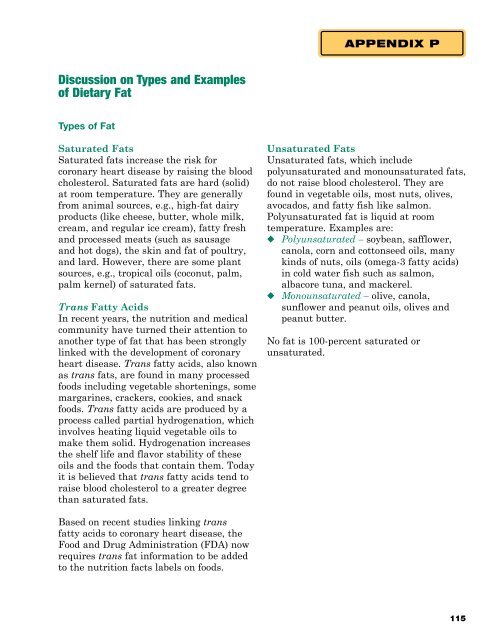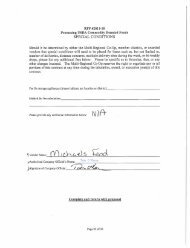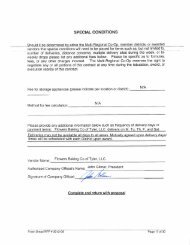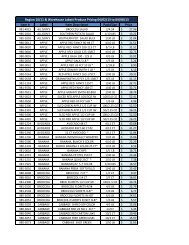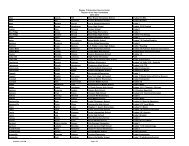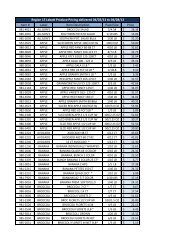Road to SMI Success Manual - Region 10 Education Service Center
Road to SMI Success Manual - Region 10 Education Service Center
Road to SMI Success Manual - Region 10 Education Service Center
Create successful ePaper yourself
Turn your PDF publications into a flip-book with our unique Google optimized e-Paper software.
Appendix P<br />
Discussion on Types and Examples<br />
of Dietary Fat<br />
Types of Fat<br />
Saturated Fats<br />
Saturated fats increase the risk for<br />
coronary heart disease by raising the blood<br />
cholesterol. Saturated fats are hard (solid)<br />
at room temperature. They are generally<br />
from animal sources, e.g., high-fat dairy<br />
products (like cheese, butter, whole milk,<br />
cream, and regular ice cream), fatty fresh<br />
and processed meats (such as sausage<br />
and hot dogs), the skin and fat of poultry,<br />
and lard. However, there are some plant<br />
sources, e.g., tropical oils (coconut, palm,<br />
palm kernel) of saturated fats.<br />
Trans Fatty Acids<br />
In recent years, the nutrition and medical<br />
community have turned their attention <strong>to</strong><br />
another type of fat that has been strongly<br />
linked with the development of coronary<br />
heart disease. Trans fatty acids, also known<br />
as trans fats, are found in many processed<br />
foods including vegetable shortenings, some<br />
margarines, crackers, cookies, and snack<br />
foods. Trans fatty acids are produced by a<br />
process called partial hydrogenation, which<br />
involves heating liquid vegetable oils <strong>to</strong><br />
make them solid. Hydrogenation increases<br />
the shelf life and flavor stability of these<br />
oils and the foods that contain them. Today<br />
it is believed that trans fatty acids tend <strong>to</strong><br />
raise blood cholesterol <strong>to</strong> a greater degree<br />
than saturated fats.<br />
Unsaturated Fats<br />
Unsaturated fats, which include<br />
polyunsaturated and monounsaturated fats,<br />
do not raise blood cholesterol. They are<br />
found in vegetable oils, most nuts, olives,<br />
avocados, and fatty fish like salmon.<br />
Polyunsaturated fat is liquid at room<br />
temperature. Examples are:<br />
◆ Polyunsaturated – soybean, safflower,<br />
canola, corn and cot<strong>to</strong>nseed oils, many<br />
kinds of nuts, oils (omega-3 fatty acids)<br />
in cold water fish such as salmon,<br />
albacore tuna, and mackerel.<br />
◆ Monounsaturated – olive, canola,<br />
sunflower and peanut oils, olives and<br />
peanut butter.<br />
No fat is <strong>10</strong>0-percent saturated or<br />
unsaturated.<br />
Based on recent studies linking trans<br />
fatty acids <strong>to</strong> coronary heart disease, the<br />
Food and Drug Administration (FDA) now<br />
requires trans fat information <strong>to</strong> be added<br />
<strong>to</strong> the nutrition facts labels on foods.<br />
115


